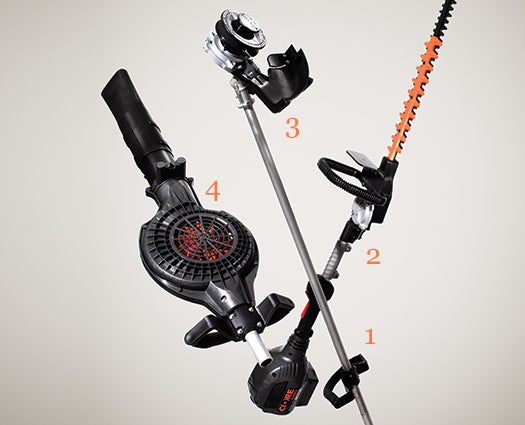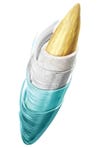A New Type Of Motor Made From Gadget Guts
Engineers at CORE Outdoor Power developed a printed circuit board-based rotary motor that's as strong as a gas-powered one, but without the emissions and noise.

Since the 1950s, the brain of any electronic device has been a printed circuit board (PCB), a piece of substrate that contains all—or most—of a device’s electrical components, including wires, switches, and processors. Rather than using PCBs simply as a control center, engineers at Montana-based CORE Outdoor Power are using them as a power source. They’ve developed a PCB-based rotary motor that’s as strong as a gas-powered one, but without the emissions and noise.
The CORE motor consists of a circular multilayer PCB sandwiched between two ring-shaped magnets. Electricity from a lithium polymer battery passes through 10 layers of copper
conductors in the PCB. The current causes the magnets to spin, which then turns the motor.
CORE’s motor is built into the Power Lok yard-tool system. A battery-equipped base unit transfers power to swappable hedge-trimmer, string-trimmer, and blower heads, each with its own 0.5––1.5hp motor. The company says the technology is scalable; it’s already created motors that produce up to 4,000 hp—enough to run wind turbines, ventilation systems, and even oil pumps.
CORE Power Lok System
Power: 0.5–1.5hp
Weight: From 11 lb.
Price: From $200

Cross Section
Super Seed
Chemical layers enhance Scott’s new Turf Builder seeds
Phosphorus helps roots grow more quickly.
Fungicide in the coating lasts about one month, protecting new seedlings.
Hydrophilic particles absorb water at twice the rate of an untreated seed and hold it twice as long.
This article originally appeared in the July 2013 issue of Popular Science. See the rest of the magazine here.